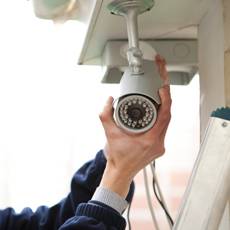An overview of how home security motion sensors work and how they can strengthen your home's security systems.
When you choose to install home security motion sensors inside your home and around your property, you make it difficult for burglars to gain entry to your home; if they do manage to gain access, you make it impossible for them to stay there without an alarm being triggered. When you include home security motion sensors in your home’s security system, these sensors will be armed whenever you arm the alarm system. After the system is turned on, the sensors will detect motion from anyone or anything inside and an alert will sound if motion is sensed.

In the ideal setup, a home will have quite a few motion sensors in position both to protect the home and to guard against anyone getting in. The value of a motion sensor is that it can cover a specific part of your home, keeping a watchful eye out for signs of trouble. If motion is sensed in that area, the sensor will set off an alarm, notifying you and/or your security monitoring company that motion has been detected.
Motion sensors: Today's advanced security systems for the home may also be equipped with motion sensors that control certain system features. For instance, you can install a system that uses a motion sensor to control the lighting in specific areas of your home, triggering lights to go on when someone walks within the proximity of the sensor. This is particularly useful for stairways and hallways and for outside porch lights and driveway lights. Motion-sensing lights with these systems invariably reduce the amount of energy you consume for home lighting, saving you money on your energy bills.
 Another motion sensor controlled function that many systems feature is the ability to record video footage triggered by a motion sensor. The system's DVR or the hard drive on your computer only records actual activity in a zone triggered by a sensor.
Another motion sensor controlled function that many systems feature is the ability to record video footage triggered by a motion sensor. The system's DVR or the hard drive on your computer only records actual activity in a zone triggered by a sensor.
Before deciding to install a home security alarm with motion sensing technology, bear in mind what motion sensors are designed for. They do not discriminate when it comes to motion and because of this, they can be the source of false alarms for home security system owners. A pet wandering about or a curtain panel being moved by the forced air from a nearby vent can trigger a false alarm.
While it is not possible to avoid all instances of false alarms, there are models that feature advanced and pet-friendly motion sensors that can cut down on the instances of false alarms.
QualitySmith has more information on a broad range of home security systems providers who include motion sensors in their systems (include link to the home security provider’s hub article here.) If you’re interested in putting a home security system with motion sensors to work for you, QualitySmith can immediately connect you to local professionals who can assist you.












Write a Comment